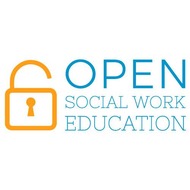
(View Complete Item Description)
This curriculum was developed as an empirical foundation for a practice model that facilitates collaboration toward providing the highest level of service for at-risk children and their families. It teaches collaboration in nine areas: legal issues, financial issues, health and mental health, education/school, family relationships, child management, support services, fair and equal treatment, and general satisfaction. It is organized around five competency areas: respecting the knowledge, skills, and experiences of others; building trust by meeting needs; facilitating communication; creating an atmosphere in which cultural tradition, values, and diversity are respected; and using negotiation skills. The curriculum is divided into five sections: Introduction to the Curriculum, Conducting the Training, Training Modules (two 3-hour modules for in-service training), Classroom Modules (for undergraduates and graduates), References and Annotated Bibliography. (345 pages)Pasztor, E. M., Goodman, C. C., Potts, M., Santana, M. I., & Runnels, R. A. (2002).
Material Type:
Module
Author:
CalSWEC




















